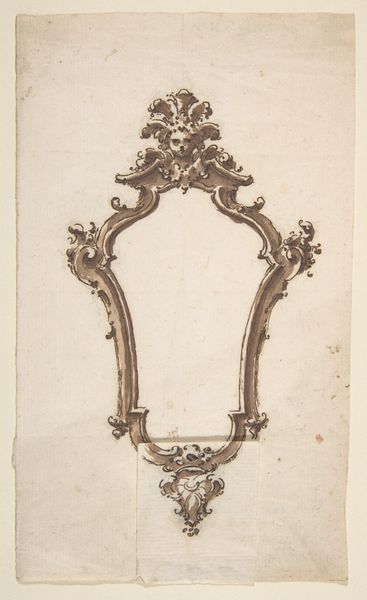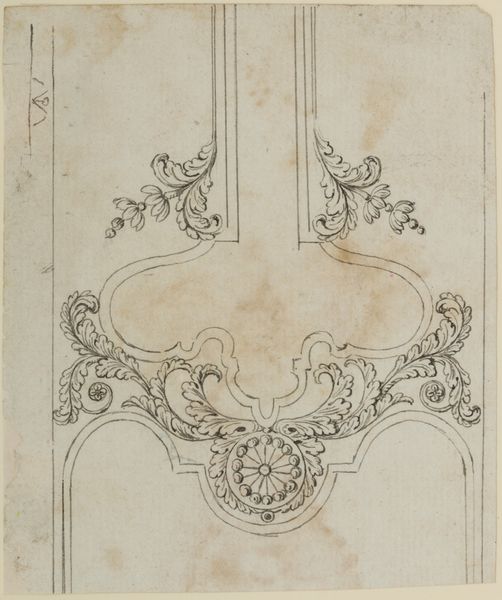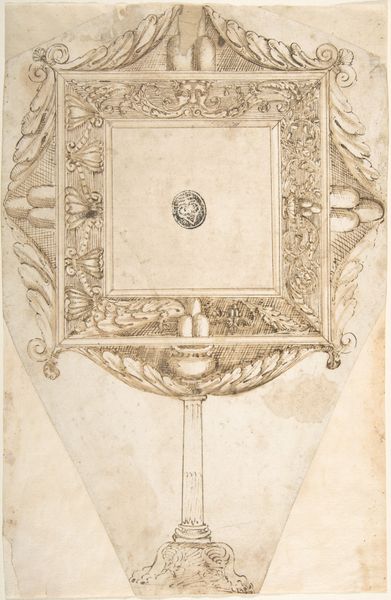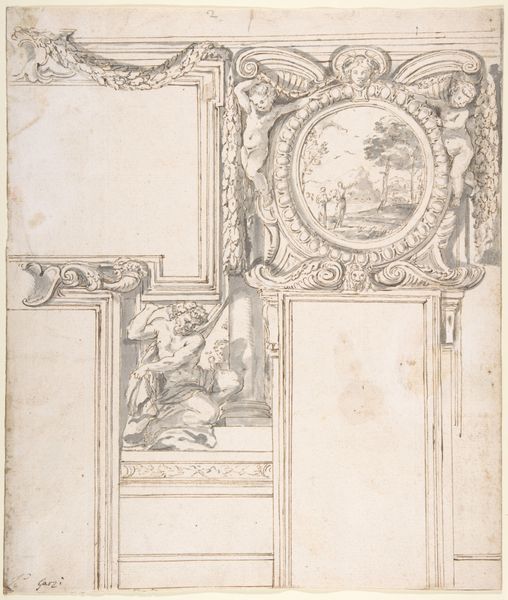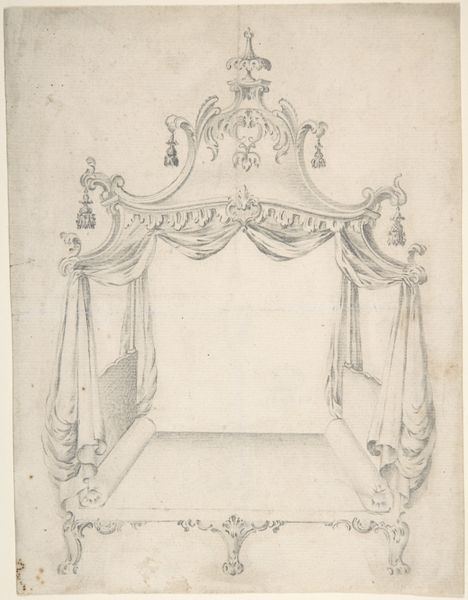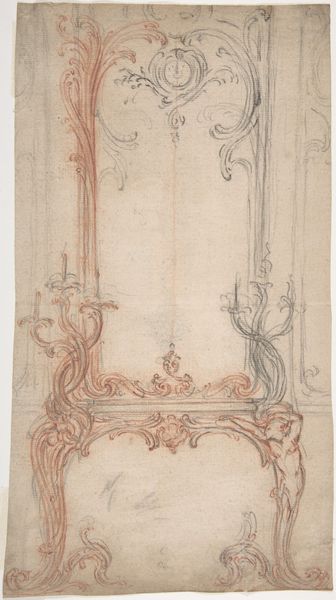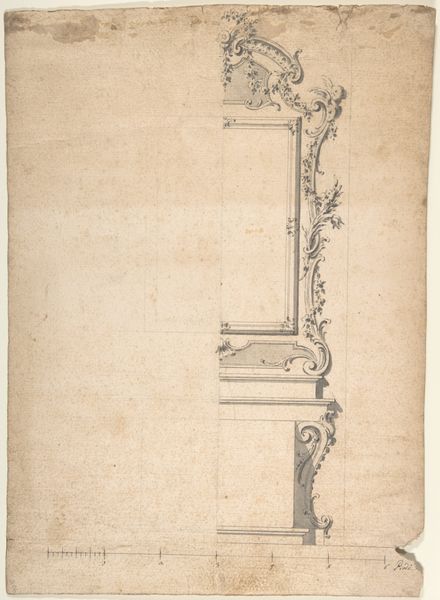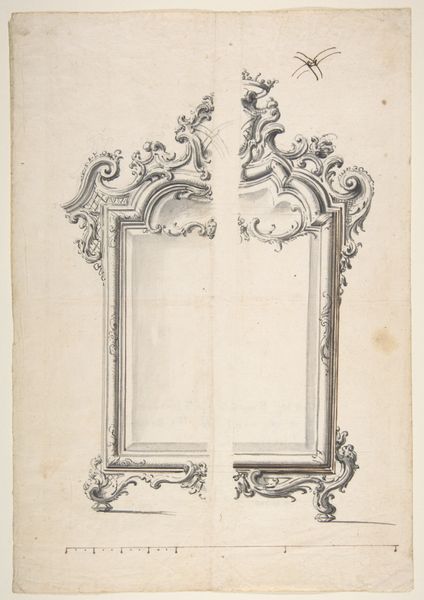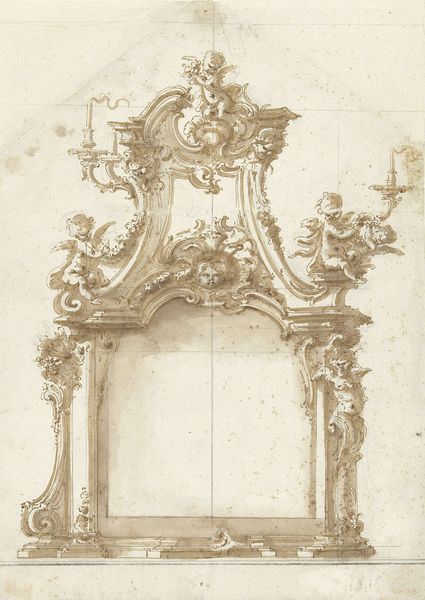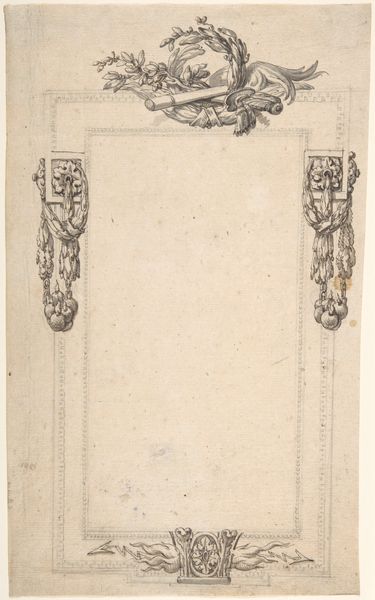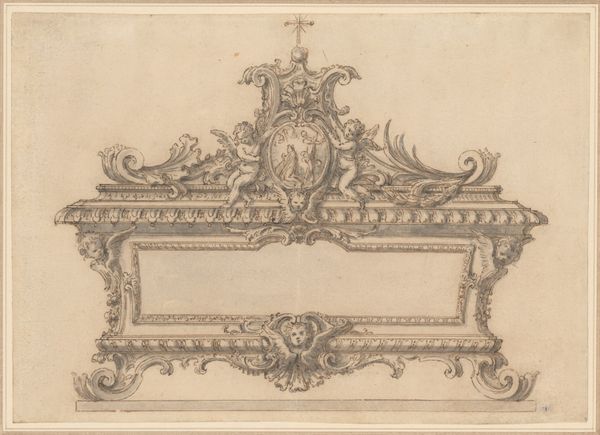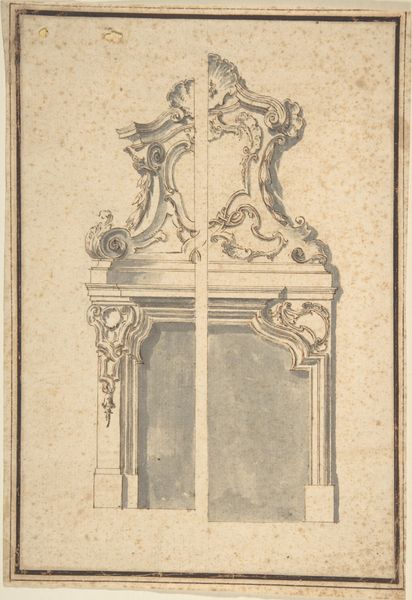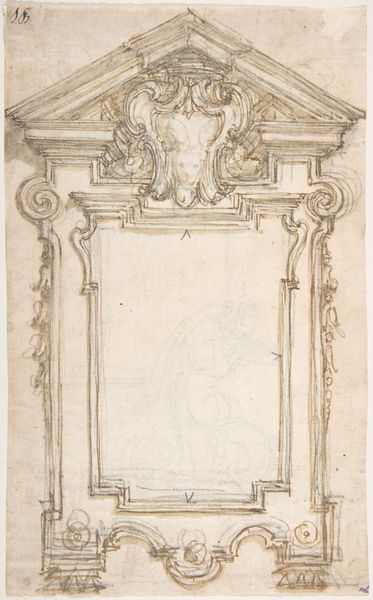
drawing, print, pencil, pen
#
drawing
#
baroque
# print
#
pencil sketch
#
form
#
coloured pencil
#
pencil
#
line
#
pen
Dimensions: 7 x 5-7/8 in. (17.8 x 15 cm)
Copyright: Public Domain
Curator: Here we have "Design for a Cartouche," an anonymous work from around 1700 to 1800, currently housed at the Metropolitan Museum of Art. Editor: My first thought is 'ghostly elegance'. The sepia tones and the unfinished quality give it such a delicate, ephemeral feel. Is it pen and pencil? Curator: Indeed. It appears to be crafted using pen and pencil on what seems to be laid paper, materials commonly employed in architectural and decorative arts studies of the period. Considering the design itself, note how Baroque sensibilities flourish – the exuberant scrollwork, the garlands. These are motifs popular in framing devices within buildings, furniture, even prints at the time. The means of reproducing such an image would depend greatly on its end use, I suspect. Editor: So, this was meant for mass consumption then? Or specifically tailored? How would such a piece be received in its time? I mean, the social function of art changed so much, especially between the 17th and 18th century when literacy began to shift public appreciation of displayed art and design. Curator: Potentially for consumption among workshops designing ornament, as a study, or as inspiration. Keep in mind how guild systems worked – there would be skilled artisans capable of realizing such designs across diverse mediums. Consider the relationship between artist, workshop, patron, consumer - each influenced design sensibilities of the era. It shows that designs moved between media depending on budgets and consumption desires. Editor: That’s fascinating! I’m now seeing it as less about individual artistry and more as part of this elaborate workshop practice, constantly circulating design ideas that shaped everything, from grand palaces to everyday tableware. Were drawings of these sorts easily reproduced? How would something like this design be scaled to life-size without digital means, for instance? Curator: Techniques such as gridding or pricking allowed for transfers and enlargements. The circulation depended greatly on patronage and the intended context. Prints, of course, allowed for a wider reach, democratizing some level of artistic exposure while ensuring its market circulation through studios and individual artisants was increased in value as their means of revenue. Editor: The socio-political dimension of these sketches becomes ever so palpable now, viewing its value based not just in artistic intention but in the access that it offered its contemporary audience. Curator: Indeed, viewing the drawing through this historical lens really highlights just how enmeshed the making and reception of art was within economic and institutional frameworks. Editor: It truly makes you reconsider the boundary between "art" and the wider culture industry.
Comments
No comments
Be the first to comment and join the conversation on the ultimate creative platform.
